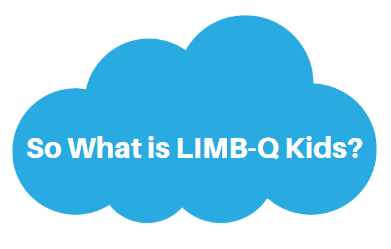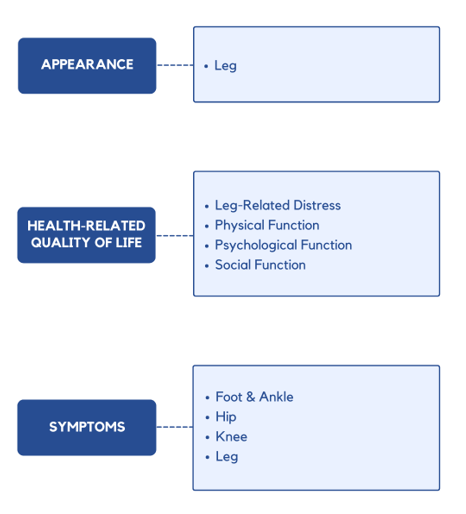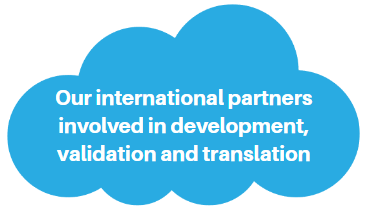
LIMB-Q Kids
“A new patient-reported outcome measure for children and adolescents with lower limb differences.”
CONCEPT-DRIVEN APPROACH
LIMB-Q Kids is a rigorously developed patient-reported outcome measure that can be used to measure outcomes in children and adolescents with lower limb differences. Lower Limb Differences can arise from a spectrum of disorders, which can be either congenital or acquired. LIMB-Q Kids was developed from concept elicitation interviews with 79 patients with lower limb differences and their parents from Canada, Ethiopia, India and the USA. To establish content validity, 17 cognitive debriefing interviews were conducted with patients and input was obtained from 23 clinical experts from Australia, Canada, Ethiopia, India, UK, and the USA. LIMB-Q Kids was then field-tested internationally with 800 patients from 16 sites in 7 countries.
MODULAR DESIGN
The conceptual framework for LIMB-Q Kids covers 3 domains: appearance, health-related quality of life, and symptoms. Each domain is composed of multiple independently functioning scales. The variety of scales provides flexibility to choose the subset of scales best suited to measure the outcomes of interest in any given study or clinical situation. An advantage of the modular structure, with individually scored scales is that new scales can be added as gaps are identified.
Scale Structure:
APPEARANCE
The LIMB-Q Kids module includes 9 independently functioning scales that measure outcomes important to patients from their perspective. The LIMB-Q Kids modular approach allows clinicians and researchers to administer the subset of scales relevant to their situation.
This scale measures how much the participant likes the look of their leg(s). Items ask about the appearance of the leg in terms of length, size, and impact of clothing, as well as in comparison to other people’s legs.
HEALTH-RELATED QUALITY OF LIFE
Four scales measure aspects of health-related quality of life for patients with lower limb differences. These scales measure leg-related distress and physical, psychological, and social function.
SYMPTOMS
Four scales measure symptoms related to foot and ankle, hip, knee and the leg in patients with lower limb differences.
LIMB-Q KIDS FRAMEWORK
Australia
Children’s Health Queensland Hospital
Germany
UKM Uniklinikum Muenster
Brazil
Institute of Orthopaedics and Traumatology
India
Post Graduate Institute of Medical Education and Research
Deenanath Mangeshkar Hospital and Research Centre
UK
Sheffield Children's Hospital
Royal National Orthopaedic Hospital
Royal Hospital for Sick Children Edinburgh
Great Ormond Street Hospital for Children
Leeds Teaching Hospitals NHS Trust
Canada
British Columbia Children’s Hospital
Alberta Children’s Hospital
Children's Hospital of Eastern Ontario (CHEO)
Shriners Hospitals for Children, Montreal
Saudi Arabia
Taibah University
Helping to improve the health-related quality of life of children with lower limb differences.
Denmark
Aarhus University Hospital
Israel
Alyn Hospital
Türkiye
Hacettepe University Faculty of Medicine
US
Nationwide Children’s Hospital, Columbus
UCSF Benioff Children’s Hospital Oakland
Scottish Rite Hospital for Children, Dallas
Phoenix Children’s Hospital
Ethiopia
CURE Ethiopia Children's Hospital
Finland
Tampere University Hospital
LIMB-Q Kids Applications
RESEARCH
LIMB-Q Kids can be used in research studies and clinical trials to evaluate and compare different treatment approaches for children with limb differences.
INDUSTRY
Specifically designed to meet the standards and expectations of regulatory bodies, making it suitable for use in product development and evaluation.
BENCHMARKING
Supports quality improvement initiatives by providing a reliable tool for benchmarking patient-reported outcomes across institutions or treatment programs.
PATIENT CARE
Developed using modern psychometric methods to ensure its effectiveness in clinical settings, helping to inform and guide patient-centered care.
Updates:
November 2025: 16 user licenses have signed for LIMB-Q Kids. Hebrew and Dutch translation papers have been published.
April 2025: Field Test Manuscript has been accepted for publication in the Journal of Patient-Reported Outcomes (JPRO)!
February 2024 - The field test study for Limb-Q Kids is now complete! Congratulations to our 16 collaborators that contributed to this milestone! During this time we collected 800 surveys from 8 countries around the world.
Co-developers of LIMB-Q Kids:









